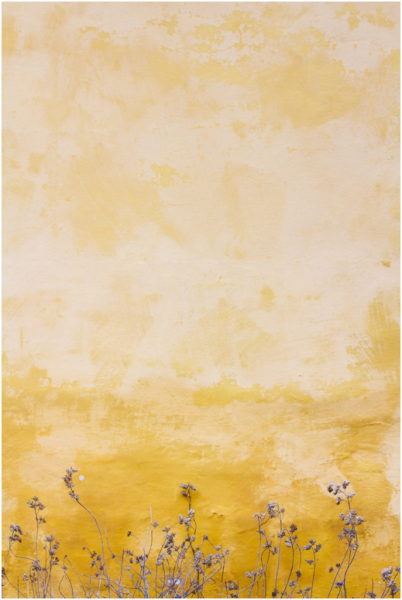Charlotte Perkins Gilman and her “The Yellow Wallpaper”
The Yellow Wallpaper is a short story written by American writer and journalist Charlotte Perkins Gilman, which describes the attitudes towards women’s mental health in the 19th-century. The story was published in 1892 in The New England Magazine and immediately gain popularity as a daring addition to American feminist literature.
Due to its importance for the feminist movement, The Yellow Wallpaper is extensively studied and discussed by college students. If this short story is part of your curriculum, read some essay samples for an in-depth analysis of the themes and characters. The best sample of a research paper on The Yellow Wallpaper can be found on Tooly. These examples by professional writers at Tooly show how to best approach this complex literary work.
All You Need to Know about The Yellow Wallpaper

Photo by Mona Eendra on Unsplash
Written as a collection of journal entries, The Yellow Wallpaper has a powerful message about the perception surrounding women’s mental issues and physical health at the end of the 19th-century. In this article, we will discuss the main aspects of this short story and everything else you need to know to understand its literary merit.
Short Summary of The Yellow Wallpaper

Photo by Adrian Dascal on Unsplash
The narrator of The Yellow Wallpaper is a woman who is brought by her physician husband to a retreat in the countryside with the hope that a change in surroundings will help her recover from what he calls a “nervous depression”. The woman is advised to rest, exercise in the fresh air, and not exhaust herself with intellectual work. She ends up spending her days alone, resting in a large bedroom with torn wallpaper. As she keeps looking at the wallpaper, it seems to her that the patterns on the wall are moving and taking a life of their own.
Who Was Charlotte Perkins Gilman?
A feminist intellectual, activist and journalist, Charlotte Perkins Gilman was highly concerned in her writing career with the unequal status of women in society and within the marriage institution. She believed that women were robbed of the chance to express their creative, artistic, and intellectual force and to attain public and professional status. By forcing women to focus on domestic duties, society did not allow them to fulfill their potential.
The Real Story Behind The Yellow Wallpaper
Charlotte Perkins Gilman wrote the brief and shocking The Yellow Wallpaper starting from autobiographical details. She wanted to show how a woman captive in an unequal marriage is not allowed to fulfill her desire for a rich intellectual life. The story was inspired by painful episodes from Charlotte’s first marriage when she suffered from depression.
When she sought medical help, Gilman was referred to Dr. S. Weir Mitchell, a mental health specialist who recommended her to refrain from any intellectual activity and seek total rest. The doctor believed that female patients suffered from depression when they focused too much on mental life instead of taking care of domestic duties.
For a highly intelligent and creative woman like Gilman, giving up her intellectual work was a disaster that led her to a total nervous breakdown. She eventually decided to reject Mitchell’s treatment and get a divorce, after which she embarked on a successful public career as a writer and journalist.
Main Themes in The Yellow Wallpaper
Starting from her personal experience, Gilman crafted The Yellow Wallpaper to describe a woman’s fall into madness as a result of having her creativity and intelligence suppressed by a misogynistic society. Read this article if you want to know what Hilary Marland, a professor of History at the University of Warwick, thinks about this matter.
Shortly put, these are the main themes covered in Gilman’s extraordinary tale:
· Women’s health and motherhood
· Mental breakdown and treatment
· Depression and creativity
· American feminism in late 19th-century
· The subordination of women in marriage
· The importance of self-expression
· Attitudes towards women’s emotions
· The repression of women’s creativity and giftedness
· Passivity, inactivity, and self-destruction
Marriage as an Institution of Women’s Repression
When the story first appeared in The New England Magazine in 1892, the feminist reading was neglected and readers took it as a disturbing and entertaining piece. However, in the 20th-century, the many underlying nuances of The Yellow Wallpaper were widely explored and the story is now understood as a social, political, and cultural allegory, where middle-class marriage is the main element.
Using her experience as a wife and young mother, Gilman focused on The Yellow Wallpaper in exploring the many ways in which a woman must suppress her independence, her emotions, and desires within a marriage. Respectable women were expected to give in to their husbands’ will at all times, and Gilman believed this to be a crime against women’s full development as human beings.
The Yellow Wallpaper and Feminism

The main feminist issues illustrated in The Yellow Wallpaper are related to:
· Society’s strict separation between the domestic responsibilities of women and the active, professional, and public work of men
· Women as second-class citizens who must submit to the authority of their husbands
· Society’s dismissal of women’s intellectual potential
· Men’s assumption of holding superior maturity and wisdom
· The patronizing and dominant behavior of husbands towards wives
How is the Story Told?
The story in The Yellow Wallpaper is told in first-person narration. The narrator describes extensively her thoughts and feelings in journal form. The reader sees everything through her eyes. As she descends into madness, her perception of reality changes dramatically. The aim of Gilman is to illustrate the anger, desperation, powerlessness, and anxiety she herself had felt during her treatment of depression at the hands of Dr. Mitchell.
The journal also analyzes women’s position within marriage and in society, with ideas interwoven with the narrator’s feelings about her own situation. The forced passivity and numbing inactivity recommended by Dr. Mitchell intensified Gilman’s mental illness in real life, and she makes her narrator in The Yellow Wallpaper go through the same ordeal.
The Yellow Wallpaper is a gripping tale that put at the forefront of public talk important feminist issues in late 19th-century America. For its treatment of complex themes such as gender division, mental health, women’s intellectual and creative potential, the story offers students enticing study material.To discover interesting essay analyses, check out essayreviewexpert.com.











Author
Homesgofast com
Homesgofast.com is an international real estate portal and news source for Google news. Publishing international real estate, finance, homes and travel-related news and blogs for a targeted audience since 2002. Each news item is circulated to thousands of potential readers each day and is also available to the millions of people who sign up for Google news alerts. Find homes offered for sale and to rent direct from owners and some of the best real estate agents from over 35 countries